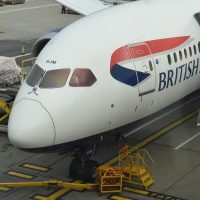 Welcome to just the second Travel Spot of 2021 that deals with my actual travels this year, rather than reliving previous trips. I’m currently in Atlanta, Georgia, having flown out on Monday (8th November), coincidentally the exact same day that the USA eased its restrictions, finally allowing vaccinated passengers from around 30 countries, including the UK, to travel to America.
Welcome to just the second Travel Spot of 2021 that deals with my actual travels this year, rather than reliving previous trips. I’m currently in Atlanta, Georgia, having flown out on Monday (8th November), coincidentally the exact same day that the USA eased its restrictions, finally allowing vaccinated passengers from around 30 countries, including the UK, to travel to America.
I flew direct with British Airways, this time in World Traveller Plus (Premium Economy to you and me), my flight departing mid-afternoon and arriving in Atlanta in the early evening. Today, after a couple of days in Atlanta, Amanda and I are driving to Portland, Maine, a trip that should take us three days in all. Then, after three weeks in Portland, I’ll fly back from Boston, again in World Traveller Plus.
Usually, my Travel Spots cover the journey itself, but I’m going to save that pleasure for a follow-up post. Instead, since this is the first time that I’ve flown to America under the new travel restrictions, this post is dedicated to the various procedures and (electronic) paperwork that, these days, are a requirement before taking any international flight (with a particular emphasis on the requirements for the USA).
Since this is quite a long post, I’ve split it into the following sections:
- US travel restrictions
- ESTA and pre-flight COVID-19 testing
- The VeriFLY app
- Online check-in
- Updates to the restrictions
You can read about the US travel restrictions after the gallery.
It’s hard to believe, but just 18 months ago, I could book a flight to pretty much anywhere in the world and, as long as I had my passport (and, for some destinations, a visa), off I’d go. It seems, in hindsight, like a very carefree world.
That all changed, of course, with the arrival of COVID-19. I was actually in America in March 2020, hurriedly cutting short my trip and heading for home, flying from Chicago to Boston and then back to the UK. That was the last time I visited America since just as I was leaving, President Trump imposed a travel ban on large parts of the world, including the UK, which meant that the majority of non-US citizens couldn’t visit.
Although the UK eased restrictions on vaccinated travellers from the USA at the end of July (which enabled Amanda to visit me in September), the US was slow to respond. In September, President Biden announced that restrictions would be eased in “early November”, allowing fully vaccinated travellers to visit, but without giving a precise date.
On the strength of this, I went ahead and, in early October, booked flights to America so that I could visit Amanda, reasoning that prices would only go up, particularly once the actual date was announced. I felt I was on pretty safe ground since these days, British Airways is fairly relaxed about customers moving or even cancelling flights without penalty. In the worst case, I would have had to postpone my outbound flight, moving it to later in November and, in all likelihood, paying a little more, since prices would have gone up in the intervening time.
As it was, I booked to fly out on Monday, 8th November, which was the most convenient date for me (although I’m no longer travelling for work, I still have regular conference calls, usually mid-week, which limits when I can fly). Then, a couple of weeks later, the formal announcement was made and I breathed a sigh of relief. Travel restrictions were going to be eased, on Monday 8th November, the date of my flight!
Pre COVID-19, booking my flight would have been the end of the process until it came time for online check-in the day before the flight. However, these days, booking the flight is just the start of it, so, just as I did when I flew back from Iceland in July, I thought it would be helpful to document all the steps I had to take.
Just to be clear, what follows are my personal experiences when flying to the USA as a fully vaccinated UK national. Nothing in this post should be taken as official guidance, particularly as things are constantly changing with regard to travel.
You can find out what I had to do after the gallery.
The first step is to ensure that you can legally enter the USA. If you are travelling under the American visa waiver scheme (which covers most people), you will need an ESTA (Electronic System for Travel Authorization) which is valid for two years. Since I’d not been flying for the previous 18 months, my last one expired in August last year and I hadn’t bothered renewing it, so that was my first step.
If you’ve not applied for an ESTA before, it’s a straightforward process, which requires you to fill out an online form. You’ll need your passport to hand, while it helps to know where you’ll be staying for your first night in the USA, although that’s not critical since you can change the address online. There’s also a $14 administration fee, which is the least expensive part of the whole trip! My only advice is to apply a week or so in advance. It takes a day or two for the application to be authorised and, should anything go wrong, applying in advance gives you plenty of time to sort out any problems.
So far, this was nothing new. However, even if you’re fully vaccinated against COVID-19, you still need to take a COVID-19 test (with a negative result) no more than 72 hours before your flight departs. This can either be a PCR test, or the cheaper (and quicker) lateral flow test. There are a host of options, including self-administered testing kits which you can have sent to your home, but since I was travelling back to Guildford from my Dad’s the weekend before I was due to fly, I decided to book an in-person lateral flow test at Heathrow, using Collinson.
This cost me £32 (with a 20% discount for booking via the British Airways website) and was a straightforward process. There are various testing operations at Heathrow, including several in the airport terminals. When Amanda came to visit in September, she took a test at Terminal 3 (having flown into Terminal 5) and when she left (from Terminal 3), she took a test at Terminal 5 (albeit the night before the flight). Honestly, it made sense at the time!
My test, however, was at a temporary site in a car park on the Northern Perimeter Road, easy enough to find if you know where it is, but not terribly well sign-posted. The process was straightforward, even though I arrived 30 minutes early (I was allowed straight in). I had to show my passport (which I knew in advance, so had brought with me) and provide the booking reference, after which someone swabbed my nose and that was that.
The only annoying part of the whole process was getting the result. I was sent an e-mail to say that my result was available, but rather than just send me the certificate, I had to log into my account (which I’d created when I’d booked the test), then follow four or five links before finally being presented with a PDF that I could download.
With that out of the way, all that remained was to assemble all the (electronic) paperwork and I was good to go. You can see how that went after the gallery.
I knew that this flight was going to be different when I started getting e-mails and texts well in advance of my flight. These provided long lists of instructions, including several exhortations to use the VeriFLY app. This is a third-party app which has been adopted by British Airways and several other airlines, designed to simplify the process of providing the necessary documentation prior to your flight.
It had been available for my flight to Iceland in July, but at the time, it didn’t seem worth the hassle to me. However, Amanda used it when she flew to the UK in September and has been singing its praises ever since, plus British Airways was very insistent that I use it, so I gave in and, on Friday, downloaded VeriFLY.
The first step is to create an account. You’ll need your passport, plus you have to take a selfie with your phone, so best to do it during daylight hours when you can find a nice, bright space for with a plain background. I found the process fairly easy, but the next step was (for me) completely counter-intuitive.
You need to create/add a trip (in my case, my flight to Atlanta). However, I could see no obvious way of doing this. On its home page, VeriFLY has a series of boxes, each with a country’s flag and a title “A Trip to xxx” (where xxx is the country in question) and, under that, “Confident Traveller”. I had no idea what these were and kept looking for an “add trip” or “create trip” button or menu option.
What I hadn’t realised is that these boxes are templates (and there are lots of them). If you scroll down far enough, you’ll find one called “A Trip to USA”. Tap on this, and you can create your trip by adding the flight details, which VeriFLY looks up for you using the booking reference.
Each trip has the specific steps you need for that country, which, in the case of the USA, starts with uploading your vaccination certificate. Fortunately, the USA (and VeriFLY) recognise the NHS App, so all you have to do is generate a PDF of your COVID-19 vaccination certificate in the App, upload it in VeriFLY, and you’re done.
Well, that’s the theory. In practice, when I created my trip, I used my full name, including my middle name, since that’s what’s on my passport, flight booking, etc. However, the NHS App only knows me by my first and last name, so that’s what’s on my vaccination certificate. VeriFLY promptly rejected it, since the names were different, even though my date of birth and passport number matched.
I got around the problem by deleting the trip and starting again, this time using my first and last name (VeriFLY lets you input a name for each trip). This time around, it matched my certificate, so VeriFLY was happy. I worried that it would cause problems with the rest of the steps, but it didn’t, which surprised me (although at the same time, I was mightily relieved!).
Next you need to upload your COVID-19 test results. Unlike the vaccination certificate, this is not an automatic process. Instead, someone has to manually verify it, which means that you need to allow plenty of time. In my case, I uploaded the PDF I’d received from Collinson on Sunday morning, receiving a response within an hour, although it can take longer. For this reason, I wouldn’t recommend getting a test on the morning of your flight, for example (although you can still present your documents at check-in and have them manually checked).
The last two steps were simple: a passenger attestation (basically asserting that you haven’t got COVID-19, haven’t been told to isolate, etc) and a final checklist for the airport. Once you’ve completed these steps, VeriFLY generates a pass which you can show at check-in rather than presenting your individual documents.
Having gone through the process (and used it at the airport), I can confirm that once I was over the initial pain of working out how VeriFLY works, things went a lot quicker at the airport. Although it requires a little bit of effort and coordination ahead of time, I think, on balance, that it’s worth it.
Now for the final step: online check-in. You can see how I got on with that after the gallery.
Online check-in is pretty routine having been around for many years, although British Airways was pushing it very heavily before my flight. There’s a lot of sense to this since the airline wants to minimise the checks that are carried out at the airport. Like VeriFLY, online check-in does require a little bit of effort and coordination ahead of time, but it does smooth your progress through the airport (and, like the VeriFLY app, if everyone does it, it helps to keep the queues short).
The main thing about online check-in this time around was the need to provide the advanced passenger information 72 hours before the flight. This is nothing onerous, just requiring you to provide details about where you’ll be staying when you arrive in the US, plus contact details. This is something that you’ve always had to provide before flights to the US.
Back in the day of paper forms, before they were supplanted by the ESTA, you used to provide the details on the Visa Waiver form which you filled in when you were on the flight. Then came the ESTA, where you have the option of providing the details as part of your application and updating them for each trip, although the airline still collects them as well.
The push for collecting the details 72 hours in advance of the flight is, unsurprisingly, COVID-19 related, since they will be used for contact tracing (should that be required). So, along with downloading VeriFLY on the Friday before I flew, I also updated my advanced passenger information on the British Airways website, which took all of two minutes.
One other thing that I’d never seen before was a text message, two days before I was due to fly, offering me the chance to check a bag in at Terminal 5 between 18:00 – 21:00 the day before my flight. If I’d known about that option ahead of time, I may well have arranged to have my COVID-19 test at the same time, killing two birds with one stone. However, since I’m always a last-minute packer, I decided to forgo that particular option, not particularly relishing visiting Heathrow three days in a row!
By Sunday, I had all my ducks lined up, so when 14:40 rolled around, I checked in using the British Airways app on my phone. I haven’t always had the best of experiences with online check-in, particularly when using apps, but the British Airways app (which has been upgraded since pre-pandemic times) is a dream, including a rather nifty seat picker (although I’d carefully chosen my seats when I’d booked the flights, one of the perks of Gold status).
So that was it. I was checked in, had generated my VeriFLY pass and was ready to go (apart from packing, of course). If you want to find out I got on during my flight, take a look at the next instalment of Brian’s Travel Spot, while if you’re interested in the hoops I had to jump through on my way back, including the debacle that was my Day 2 PCR test, then check out my flight back from Boston.
January 2022: since I flew to America in November, the rules have changed, mostly around the timing of the pre-flight test. You can see what I made of the new procedures and how I got on when I flew to Boston in January.
July 2022: by the time I flew to America in July 2022, almost all the rules had been scrapped, with the only remaining requirement being to prove your vaccination status. Given recent problems with the NHS App, which provides COVID-19 vaccination certificates, I recommend downloading your pass two or three days in advance.
If you liked this post, please let me know by clicking the “Like” button. If you have a WordPress account and you don’t mind everyone knowing that you liked this post, you can use the “Like this” button right at the bottom instead. [bawlu_buttons]
Don’t forget that you can share this post with your friends using buttons below.

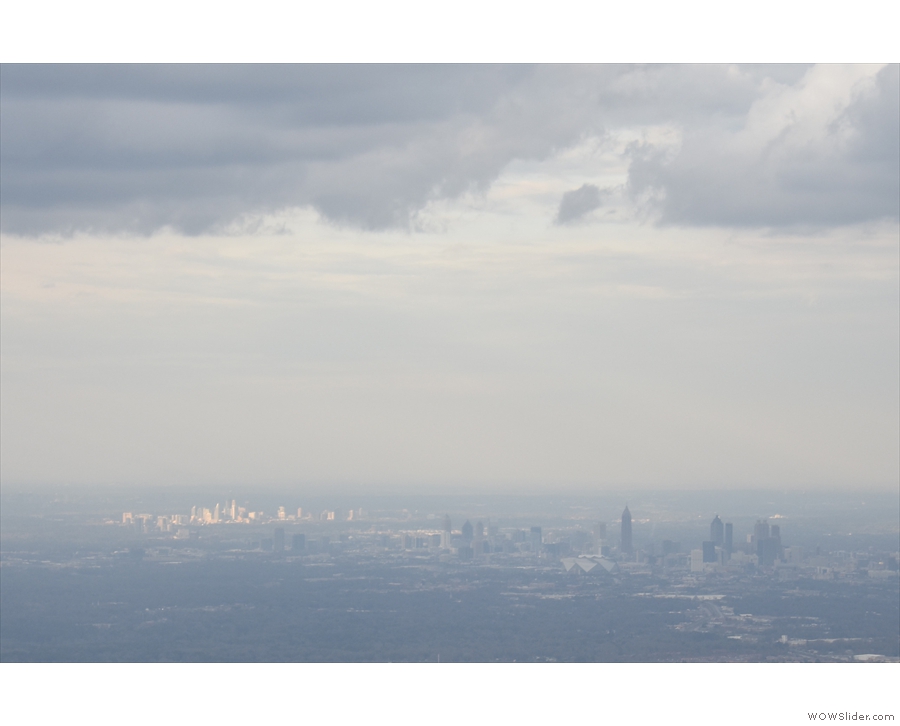
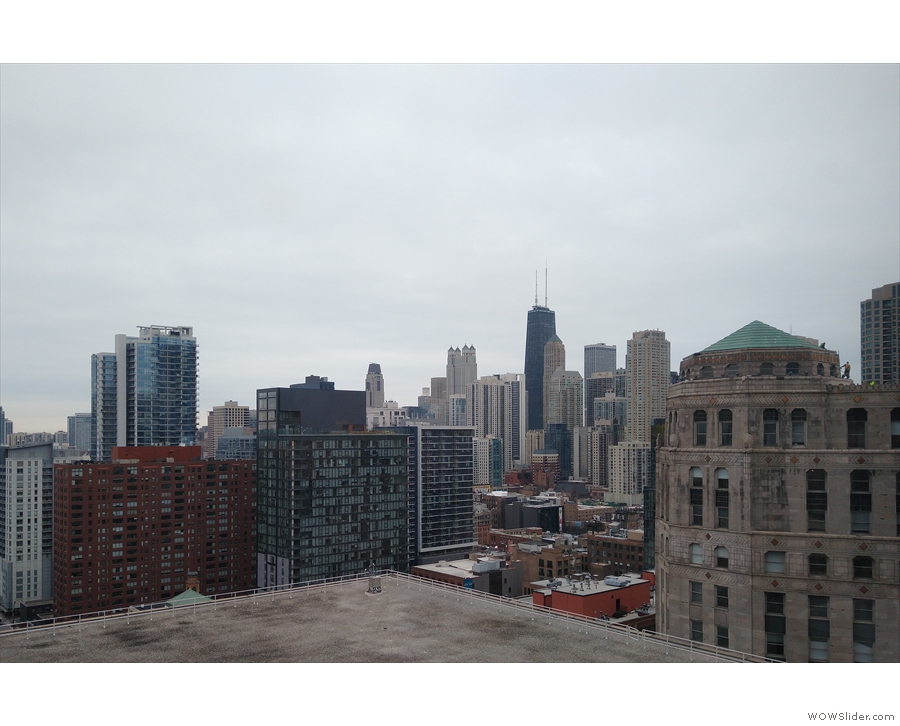
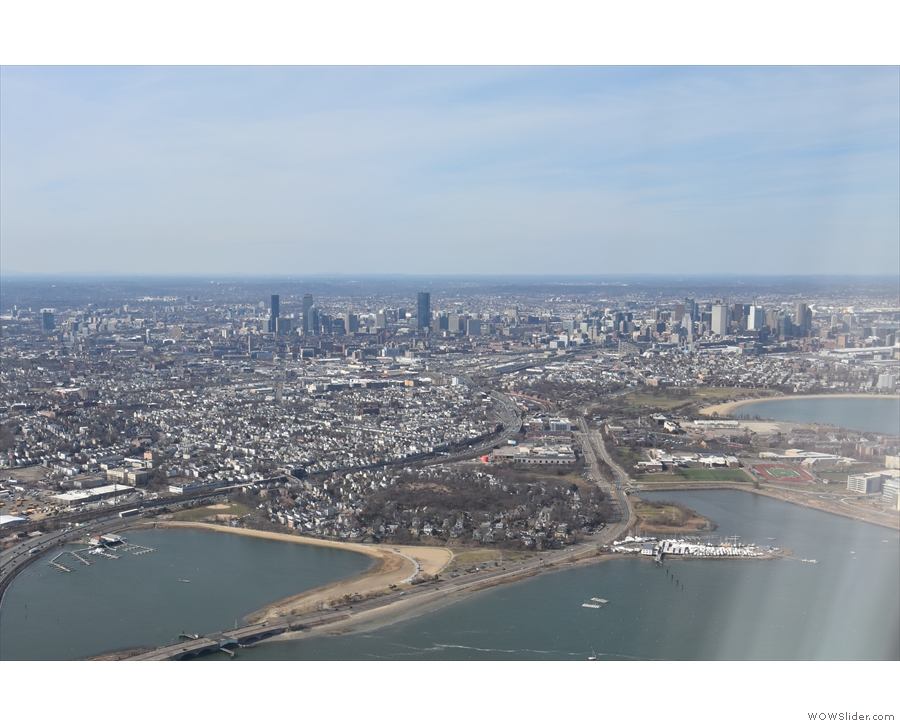
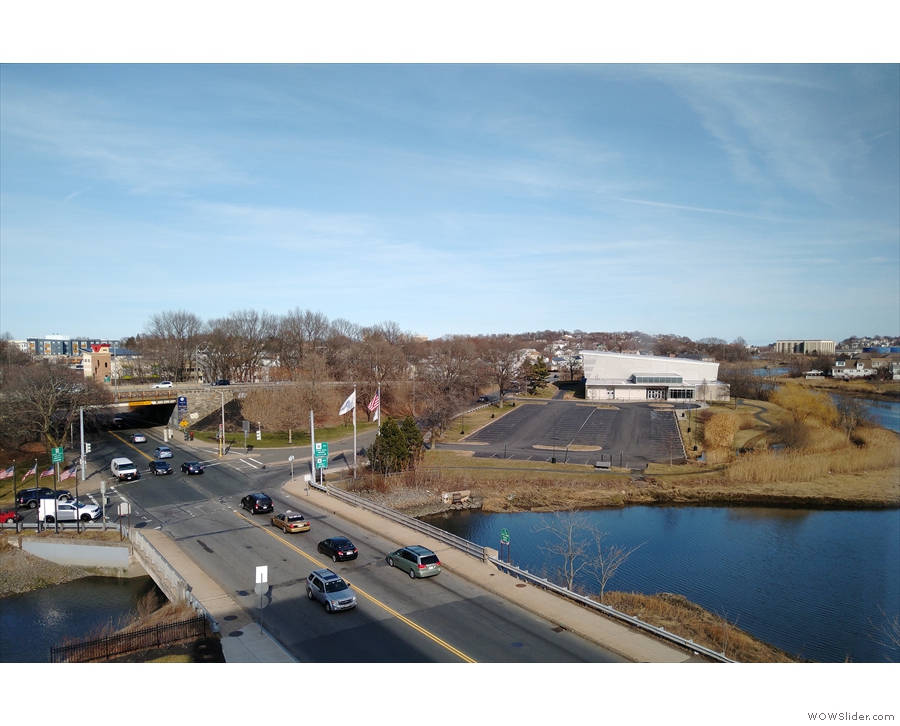
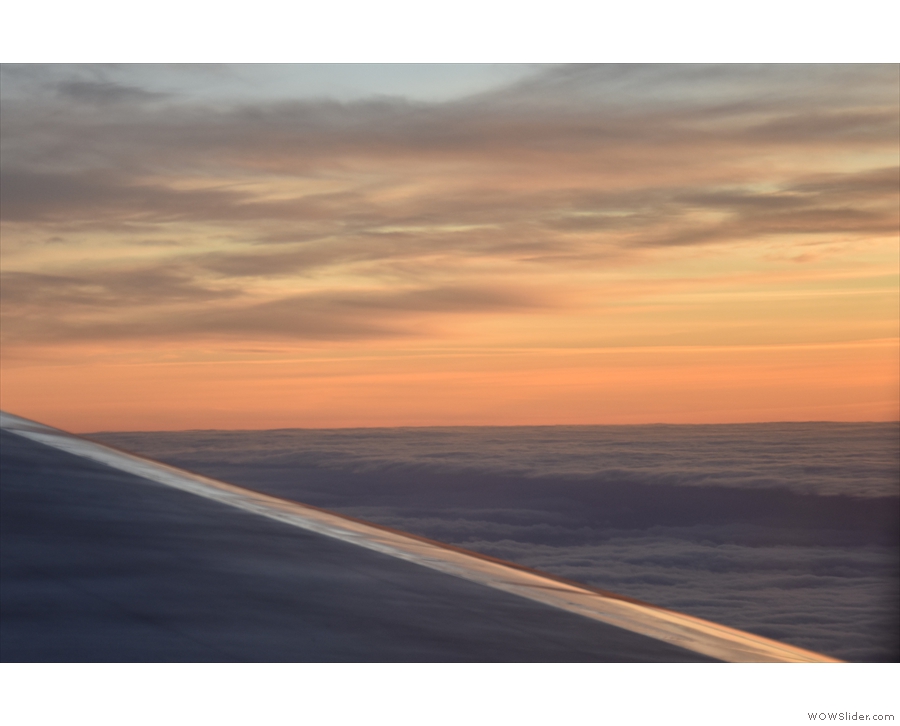
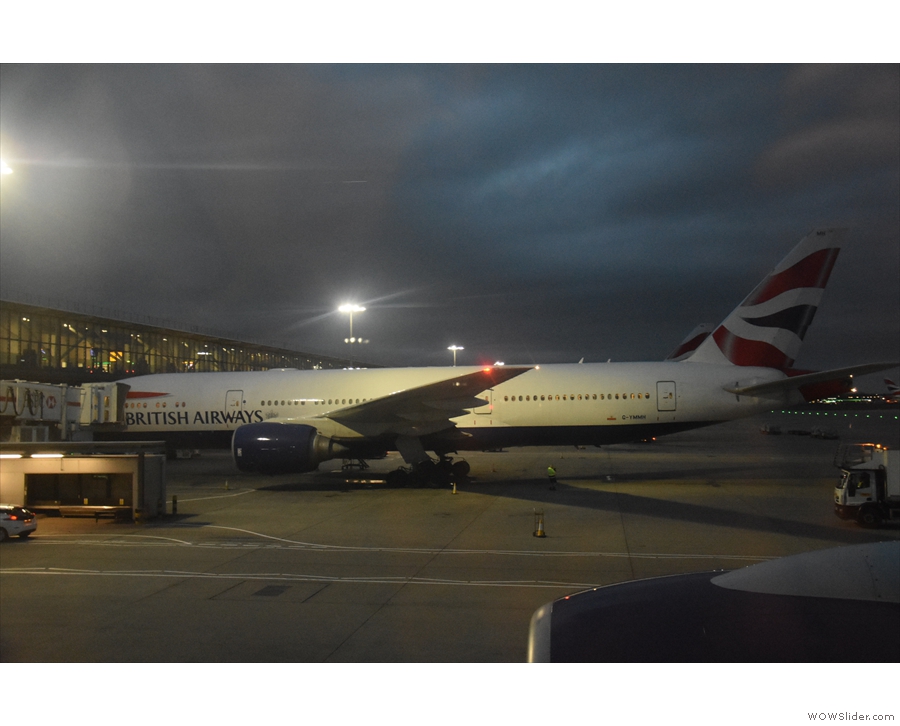
 1
1 2
2 3
3 4
4 5
5 6
6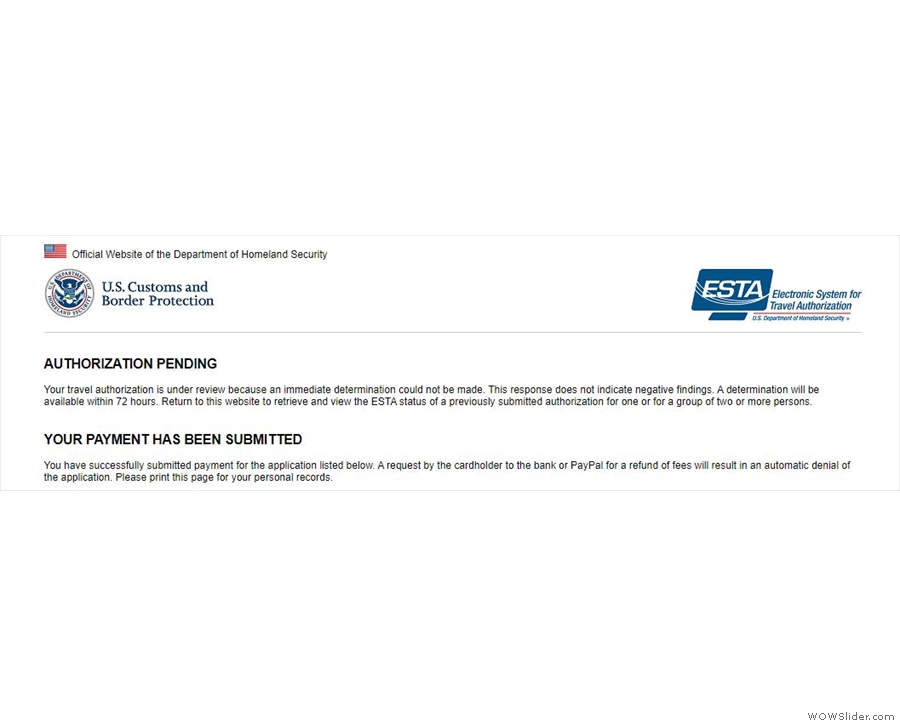
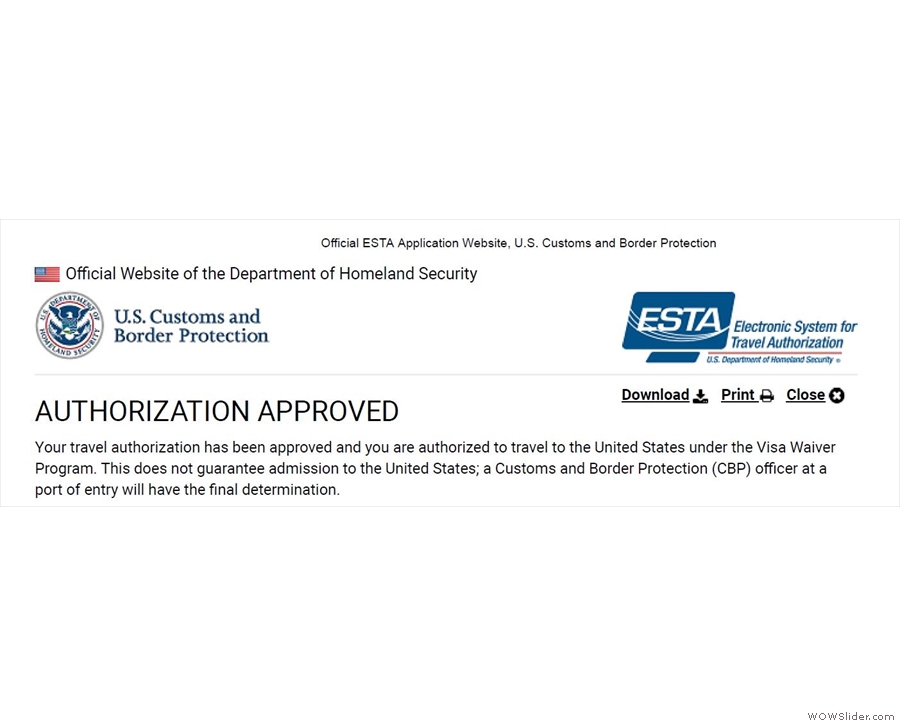
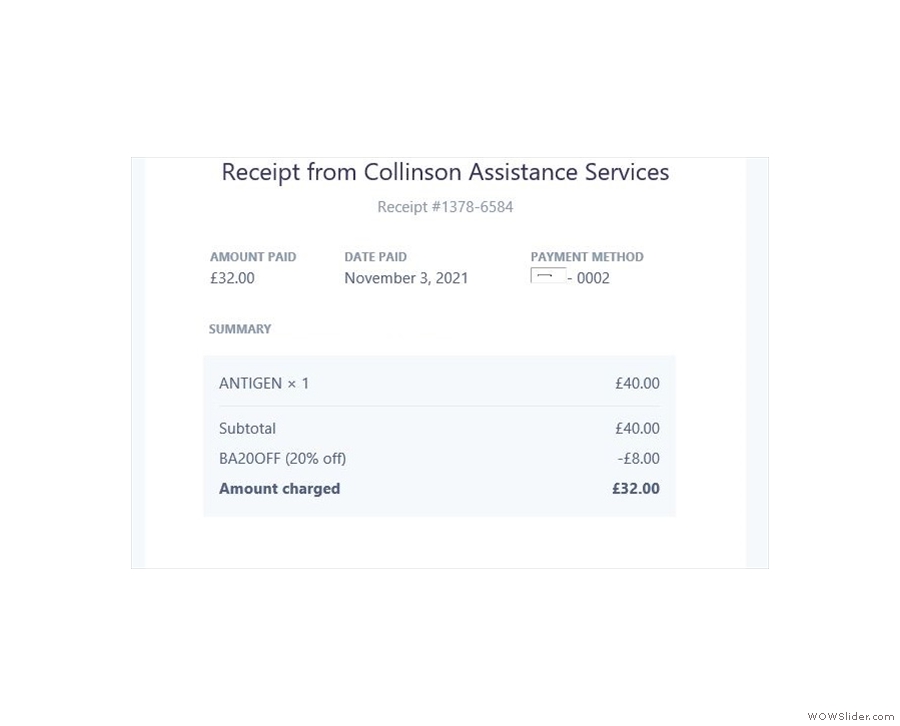
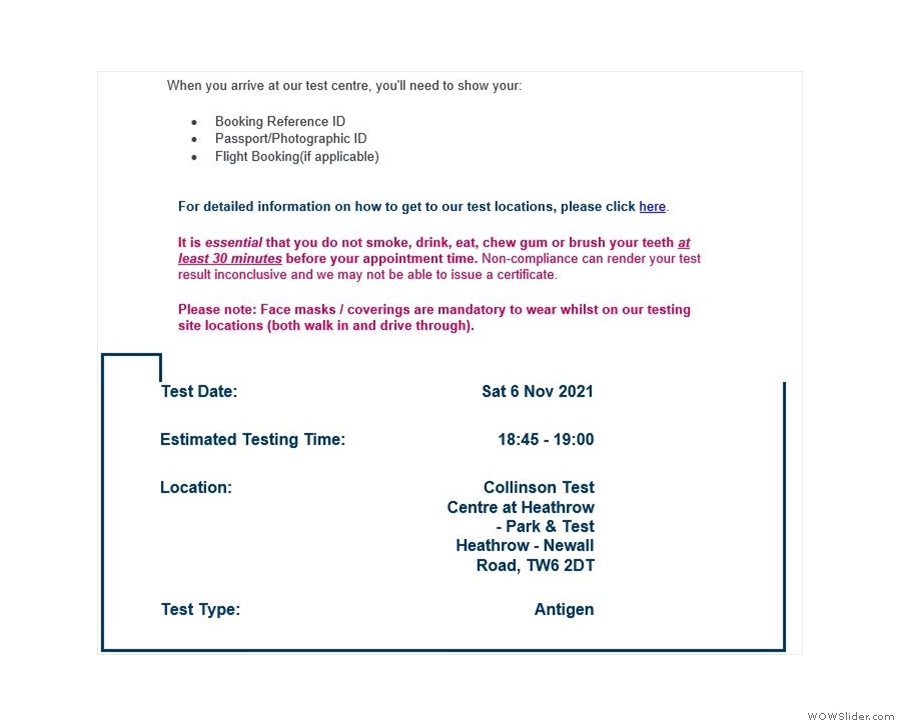
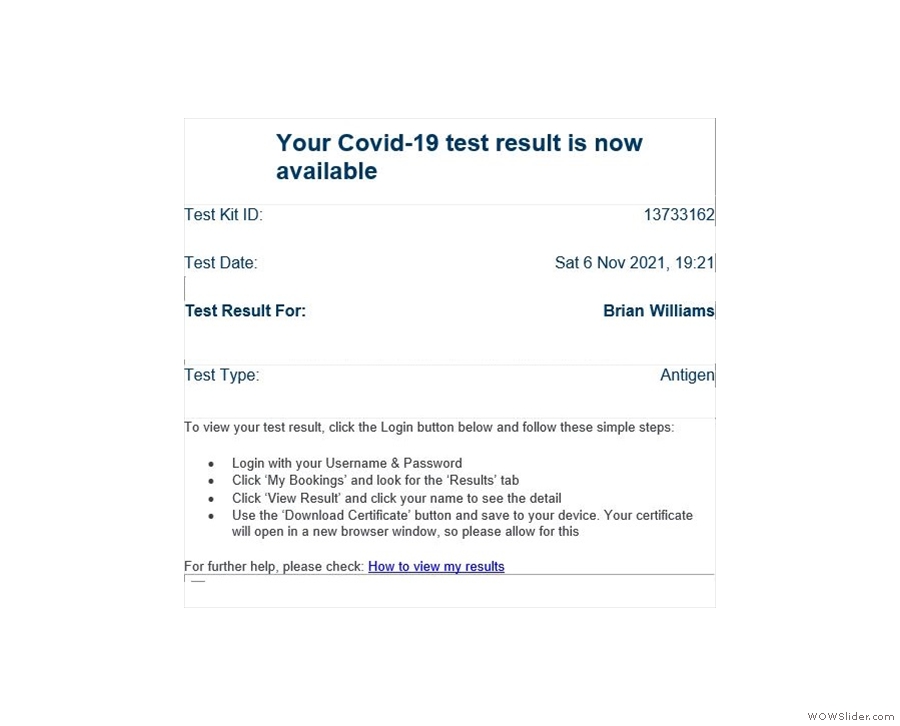
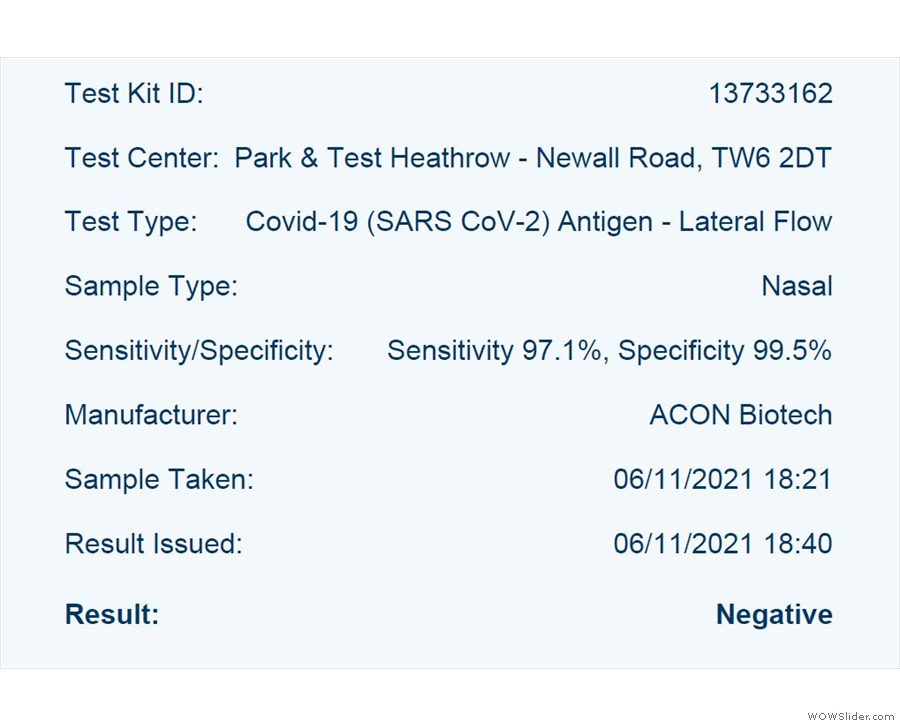
 1
1 2
2 3
3 4
4 5
5 6
6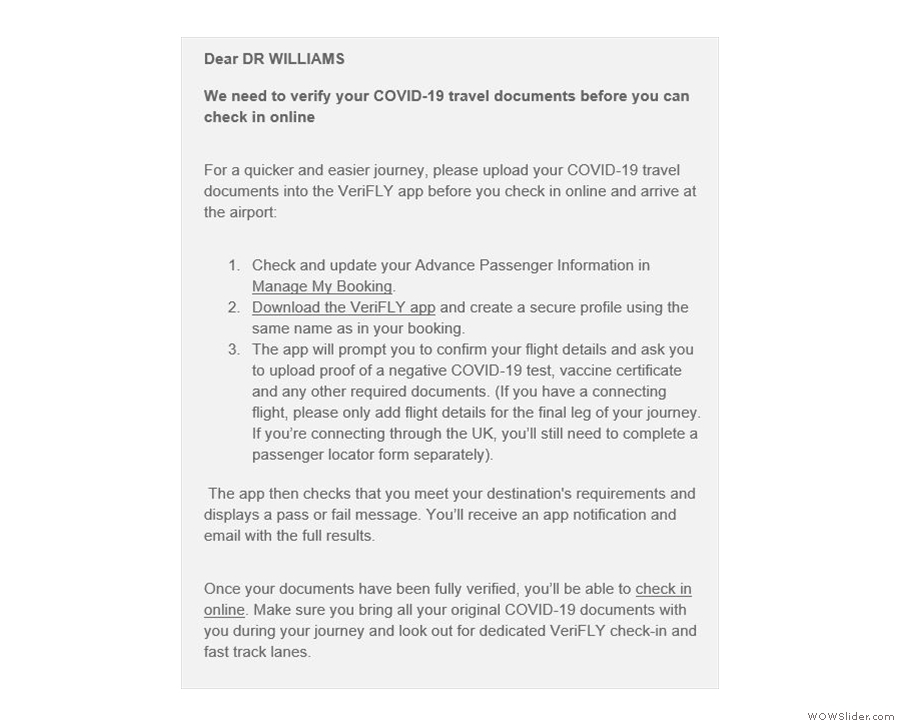
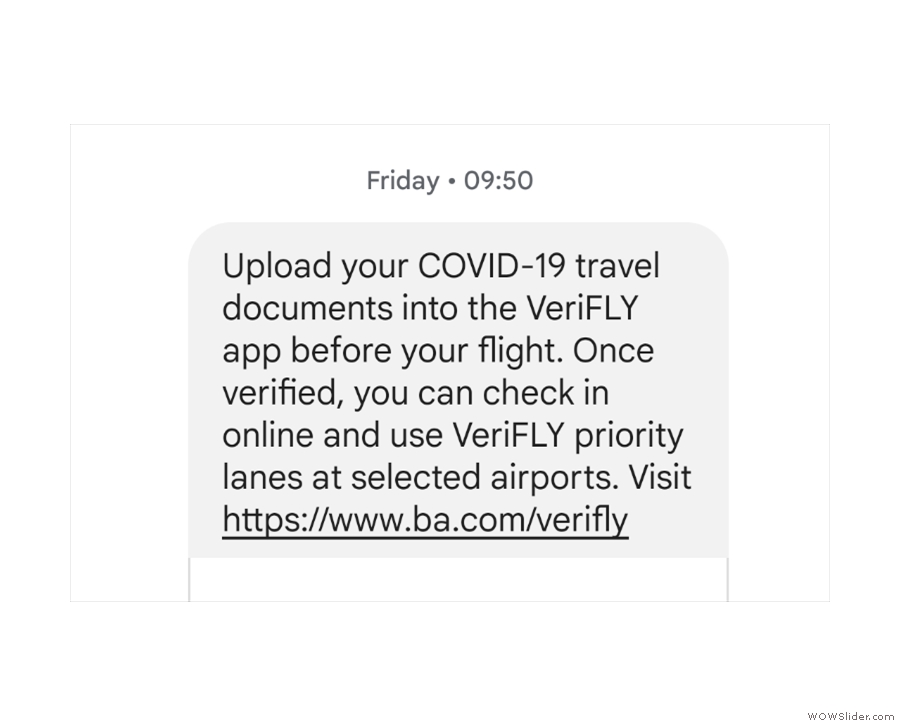
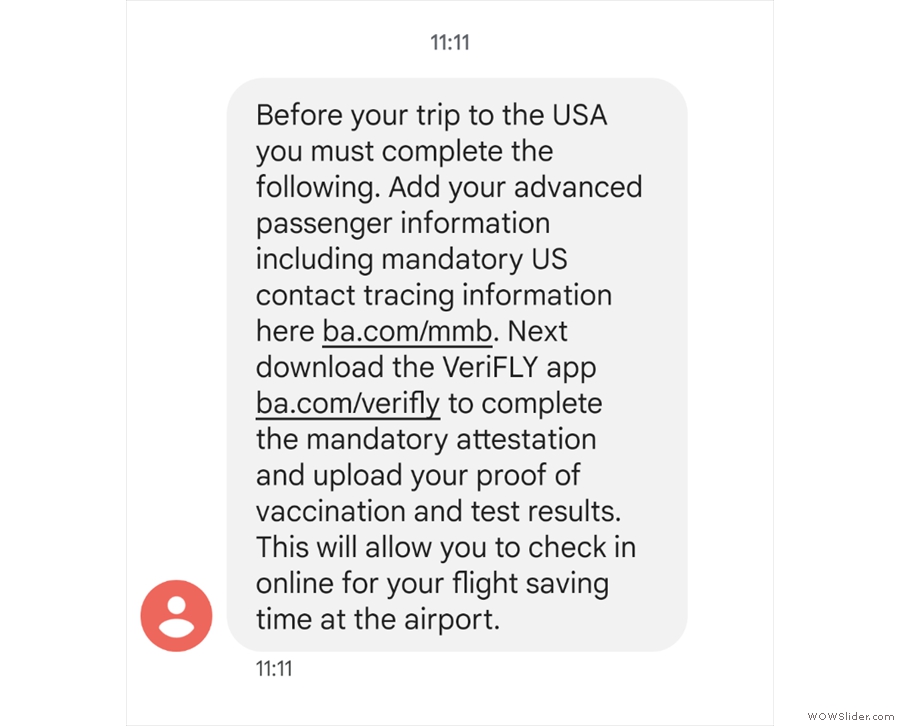
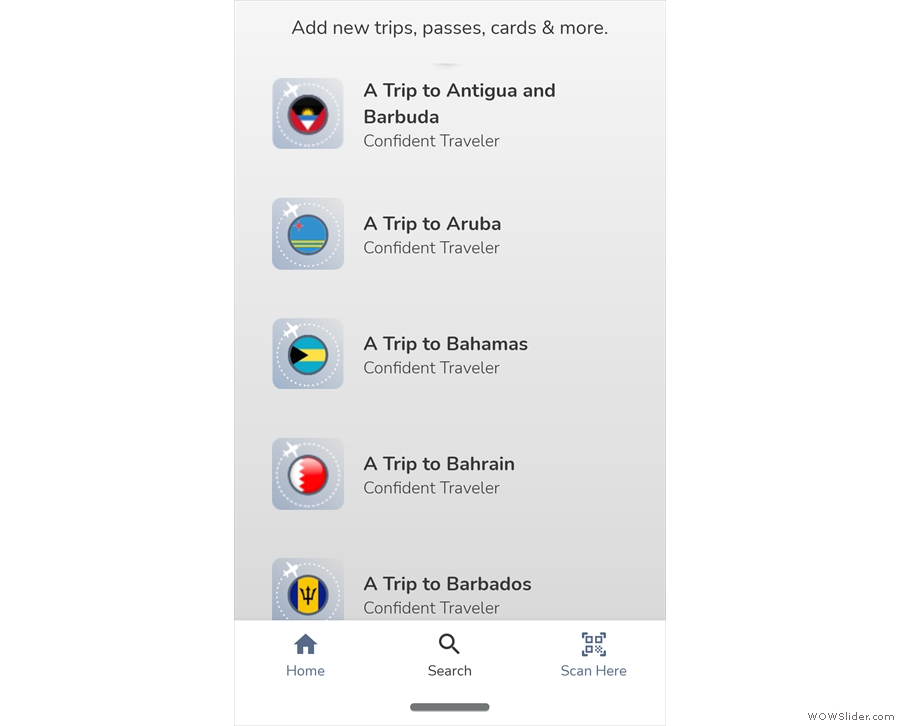
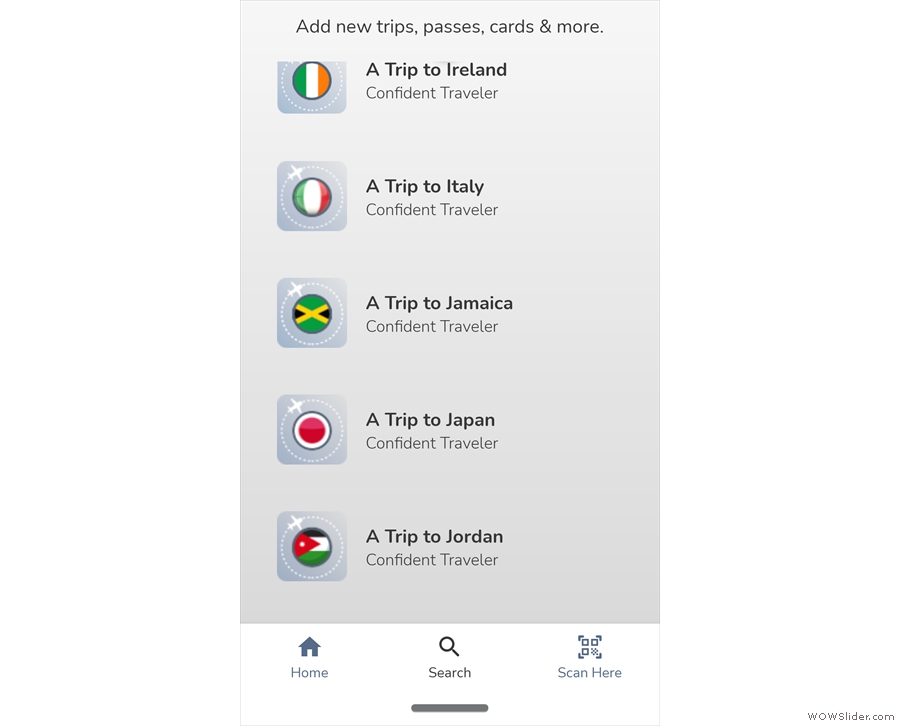
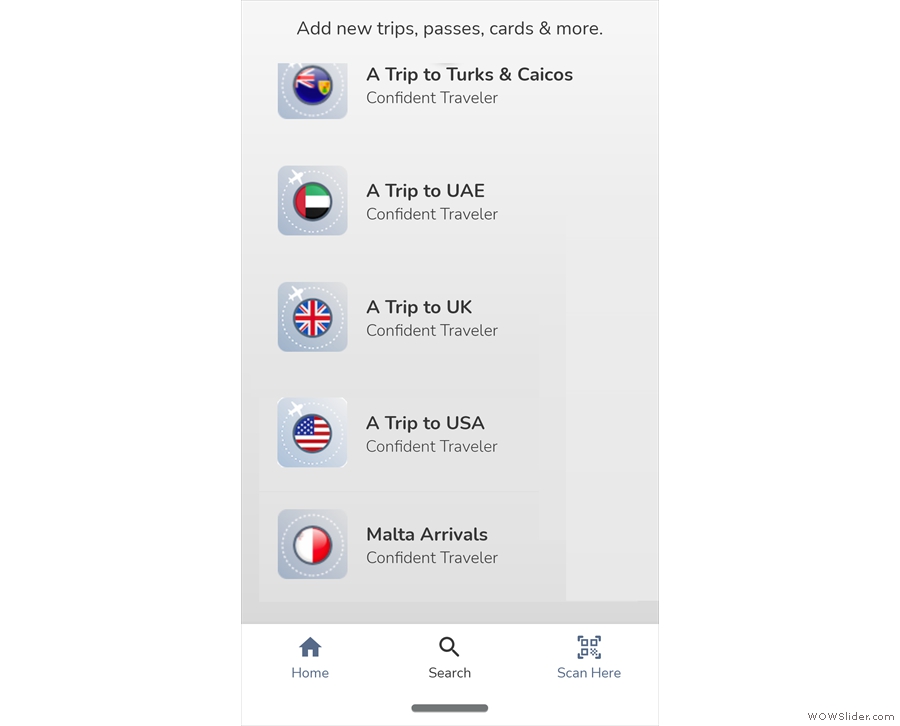
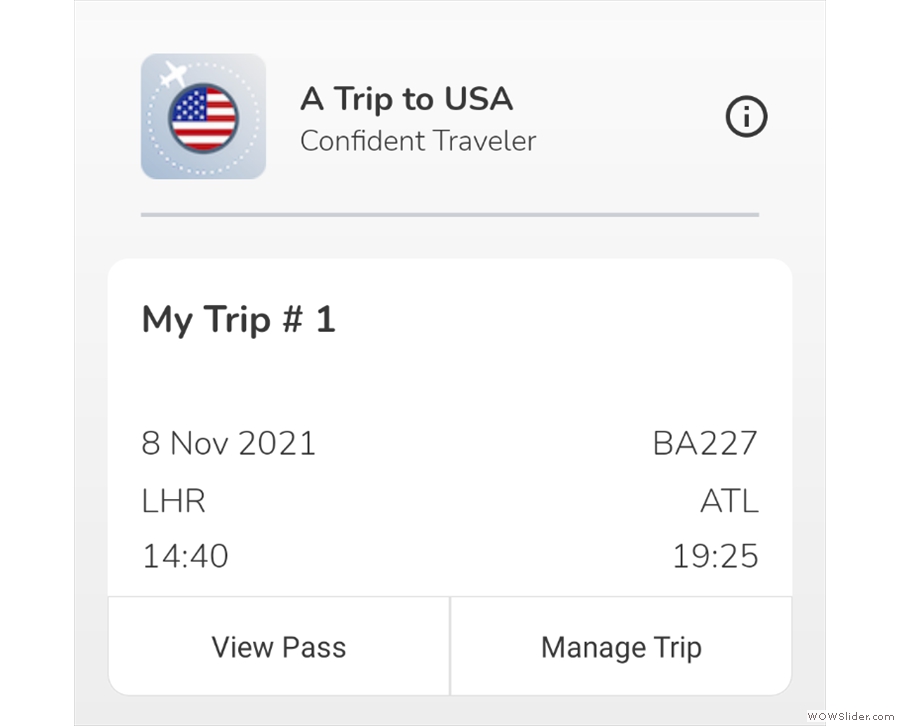
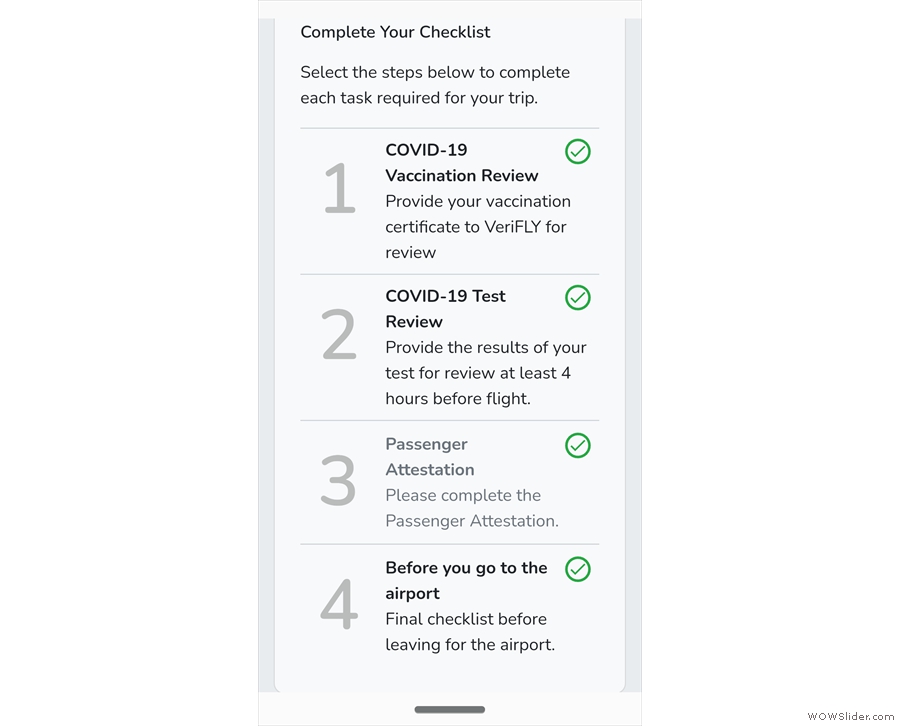
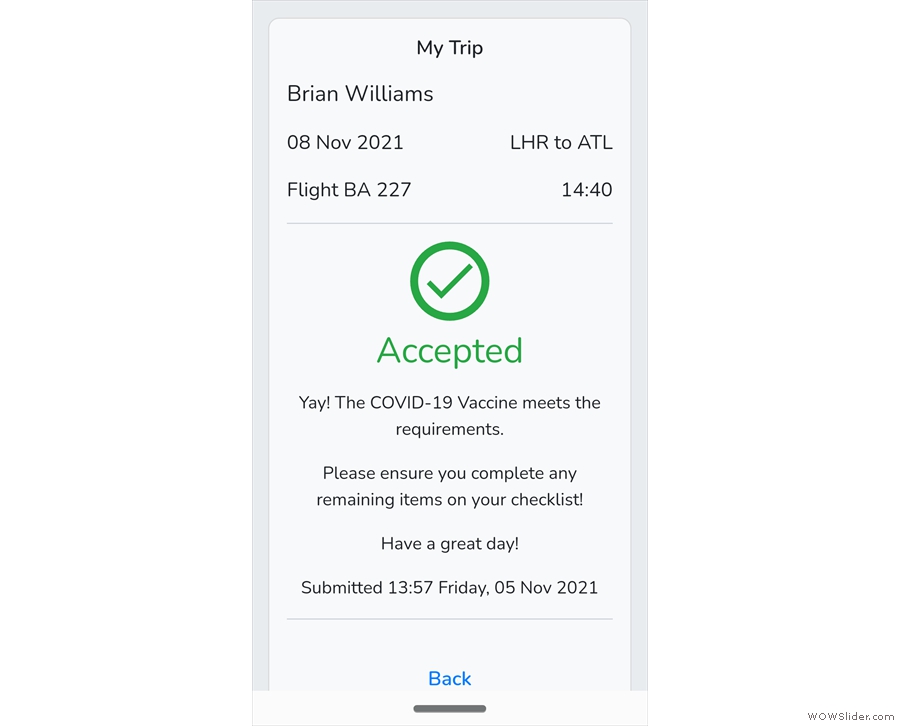
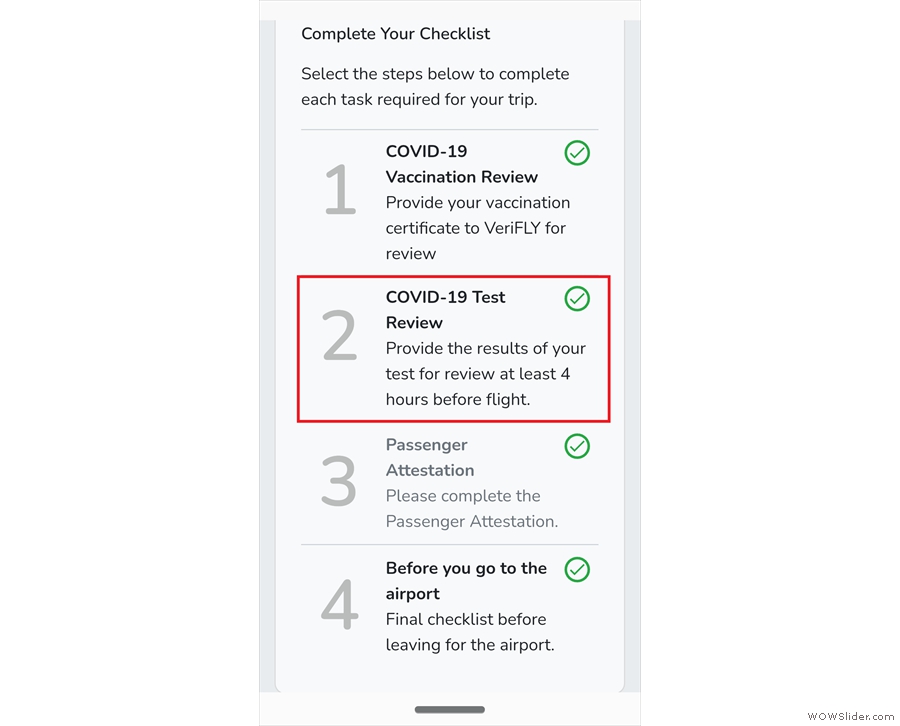
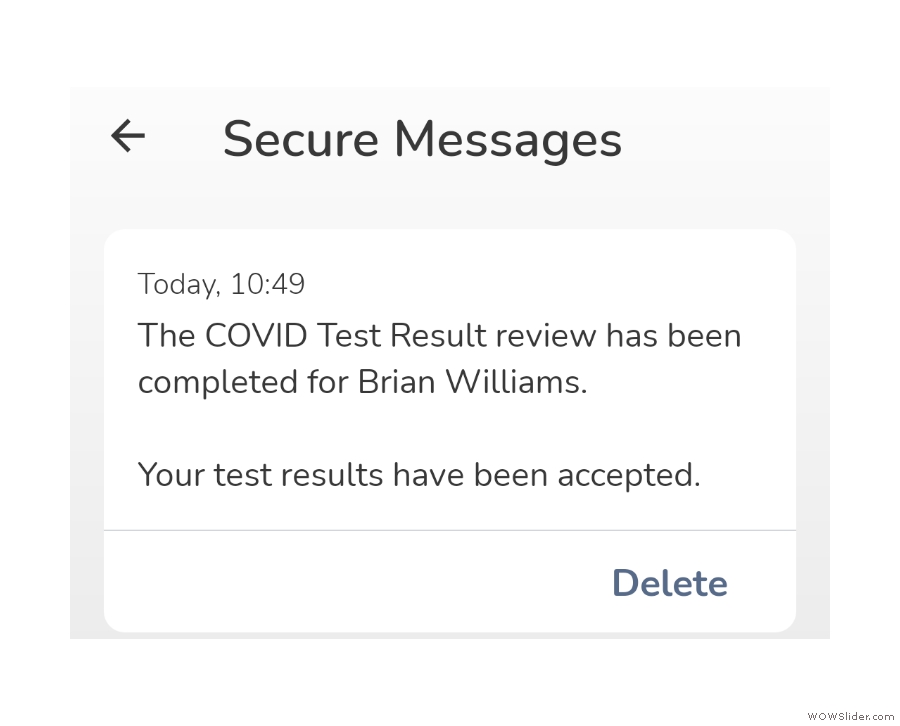
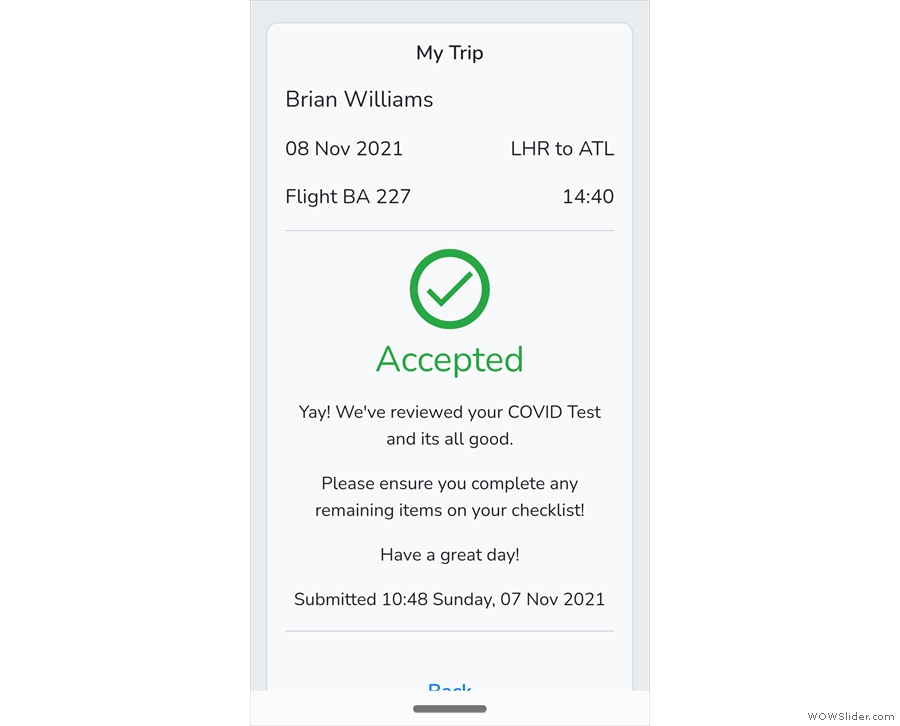
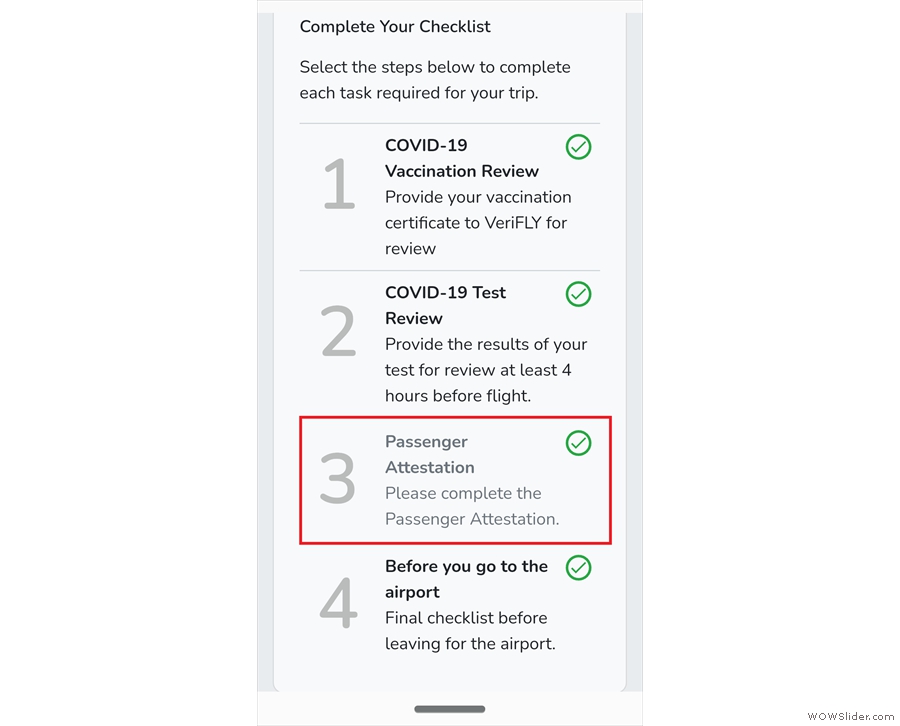
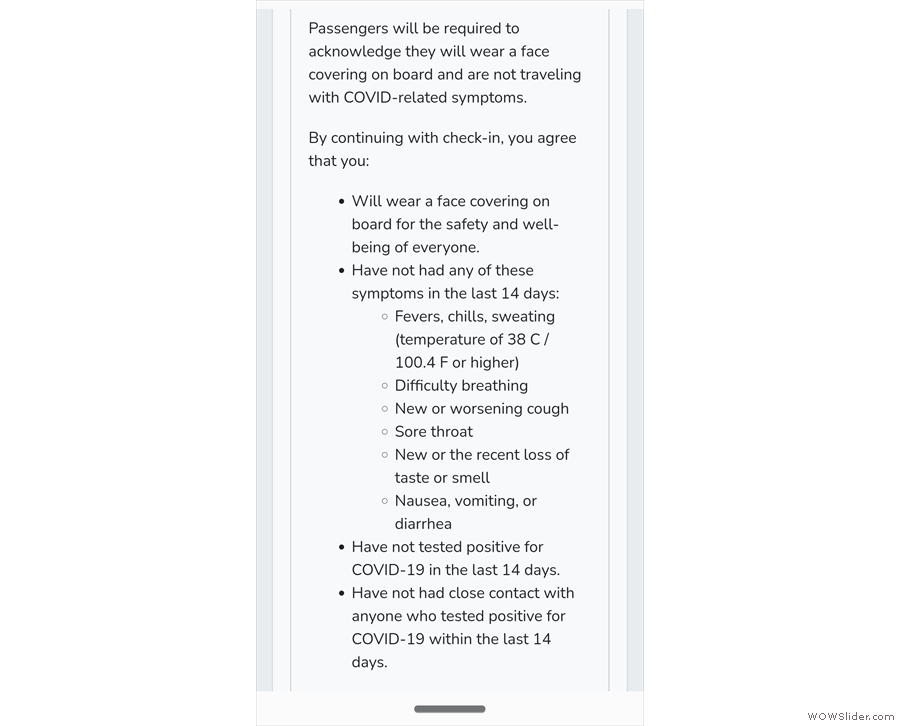
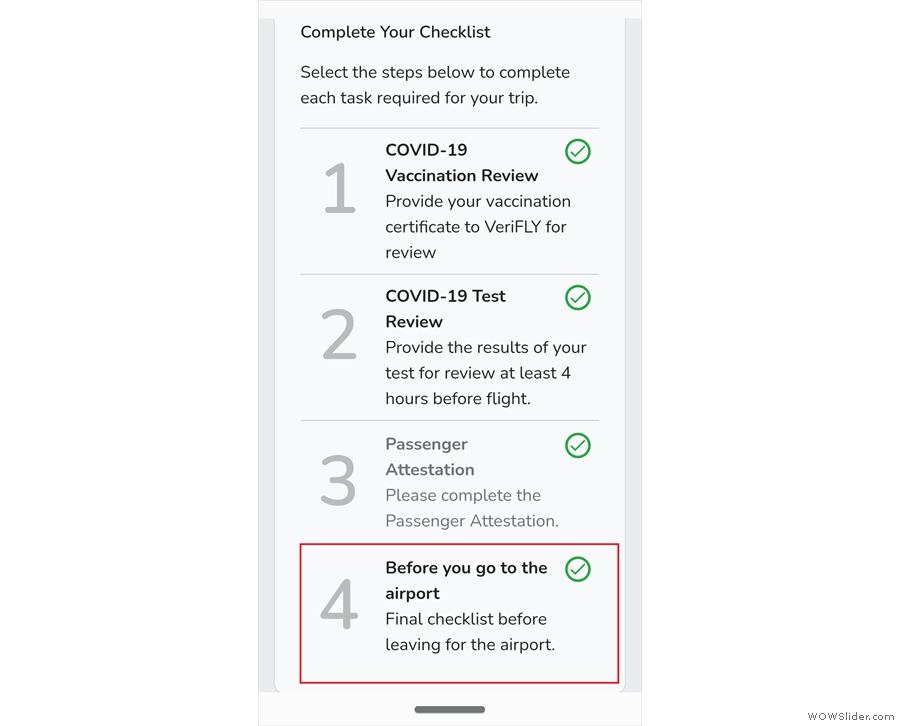
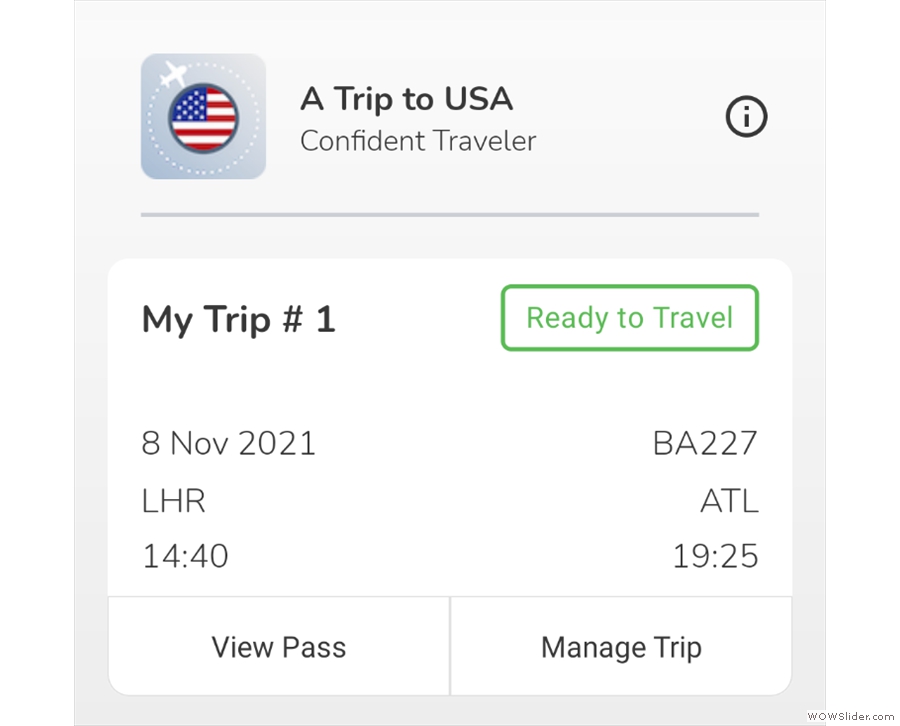
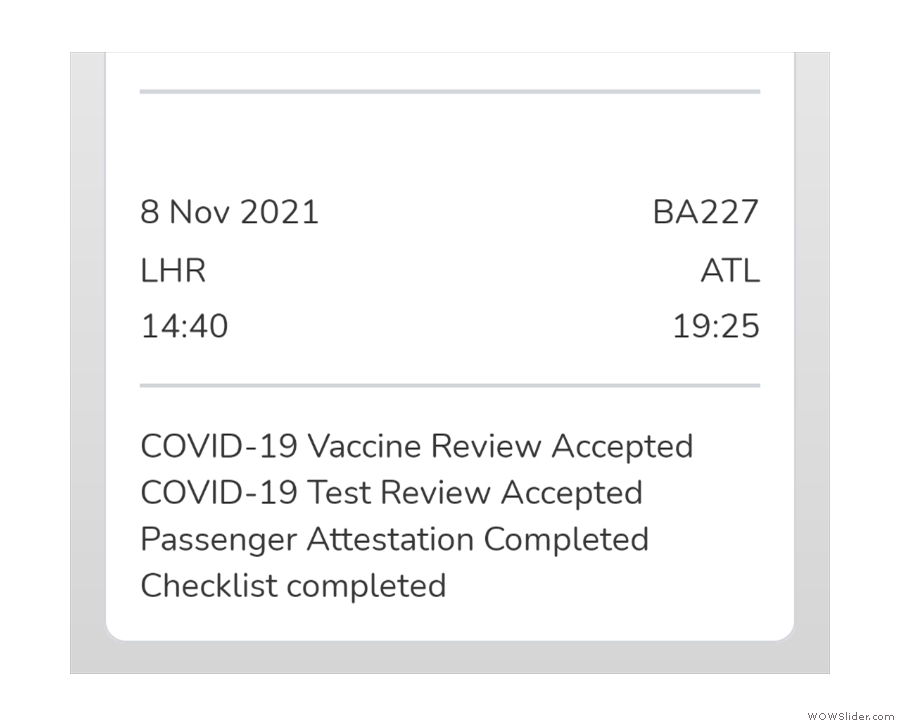
 1
1 2
2 3
3 4
4 5
5 6
6 7
7 8
8 9
9 10
10 11
11 12
12 13
13 14
14 15
15 16
16 17
17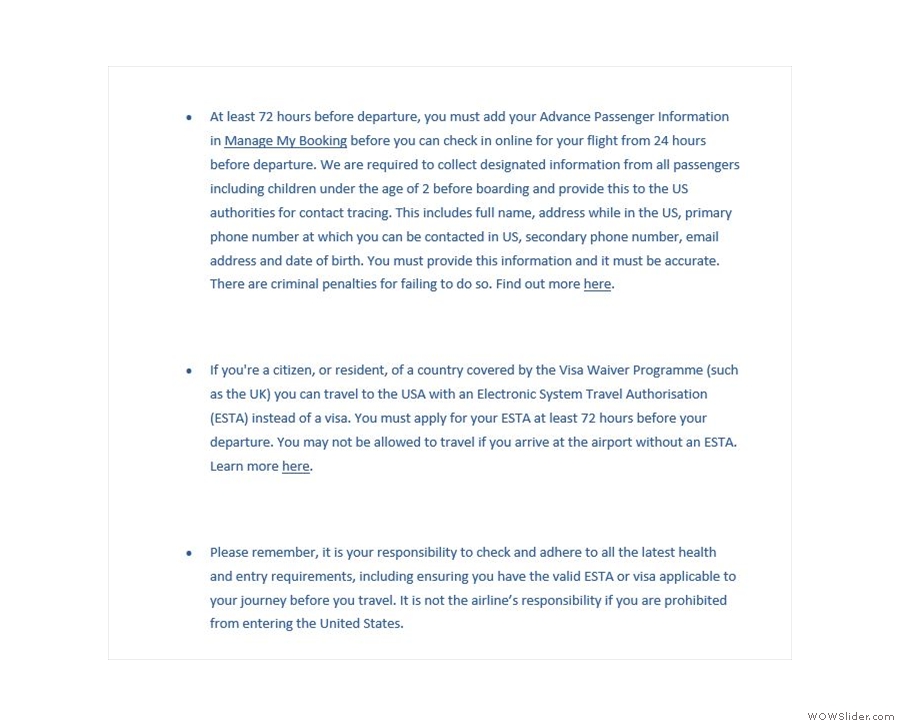
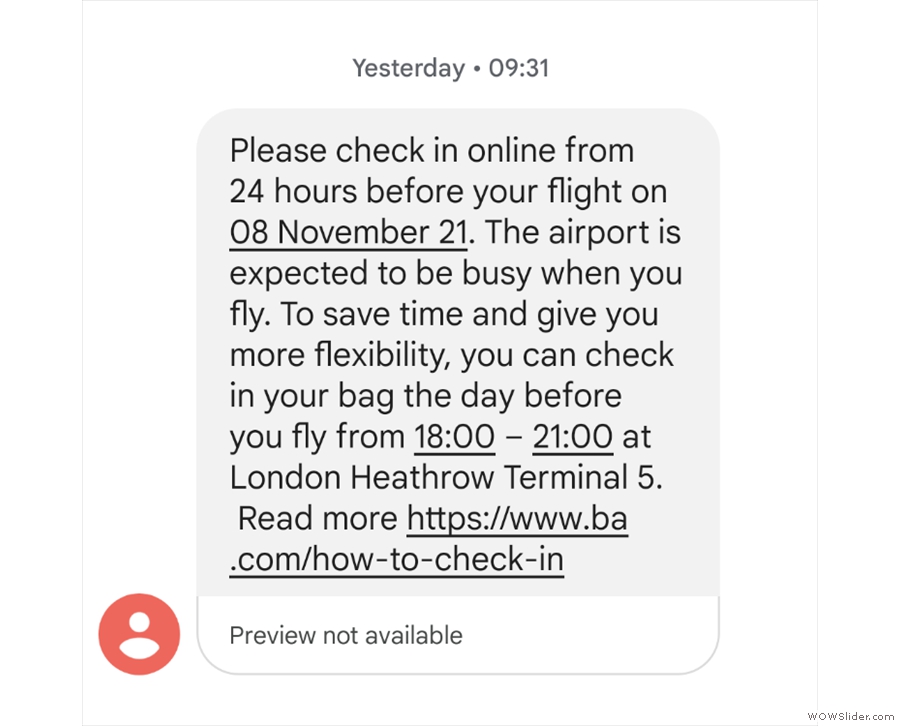
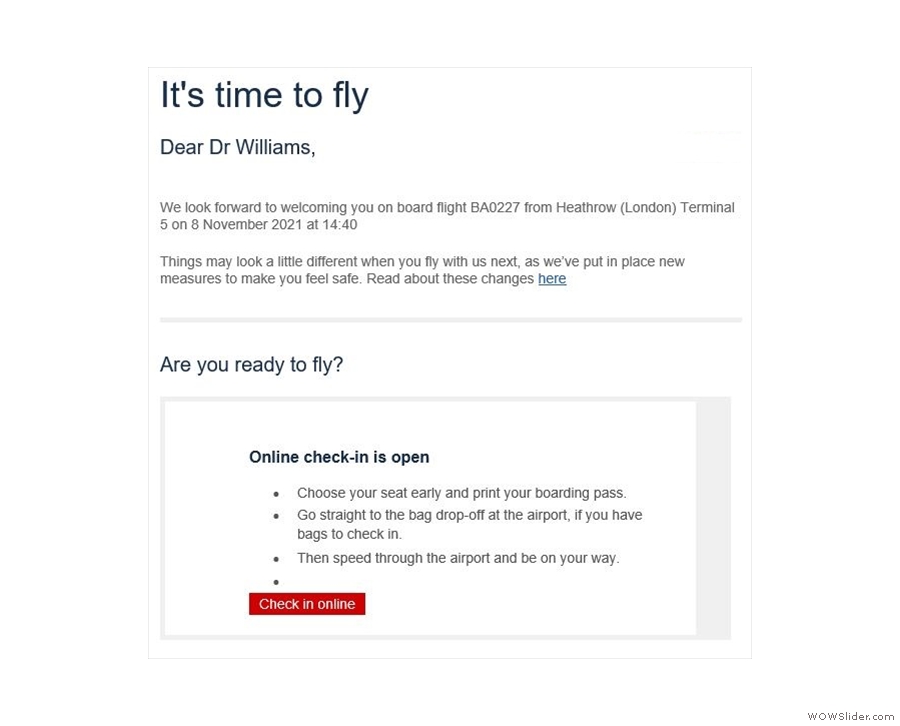
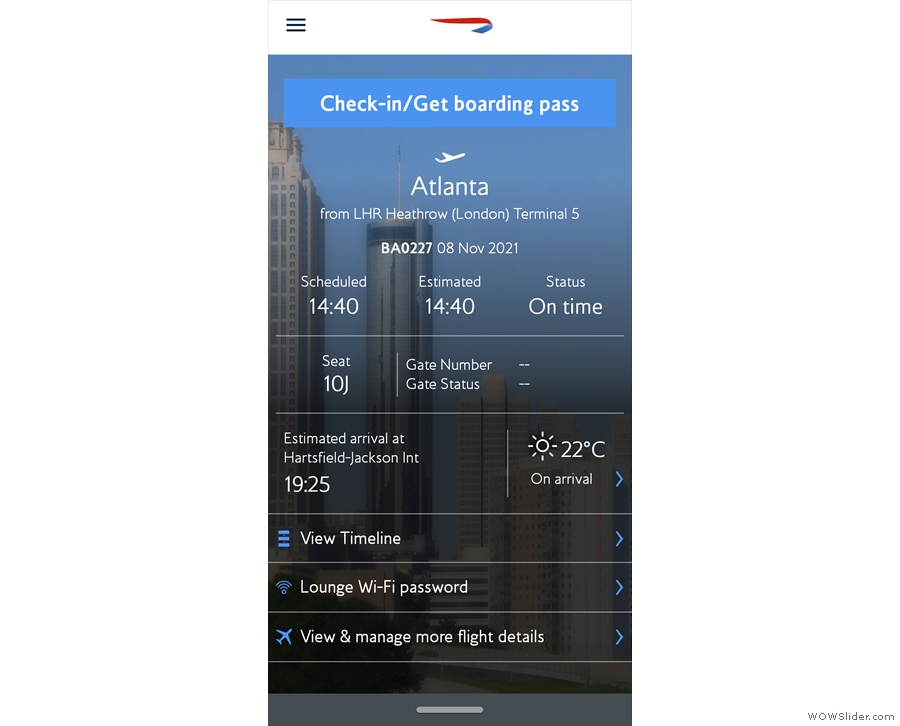
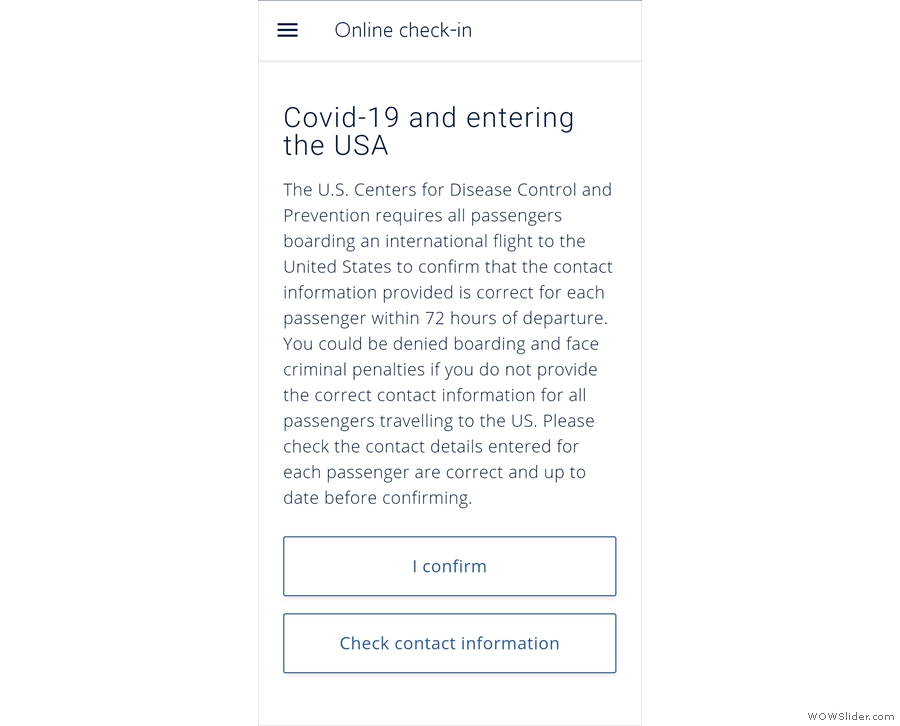
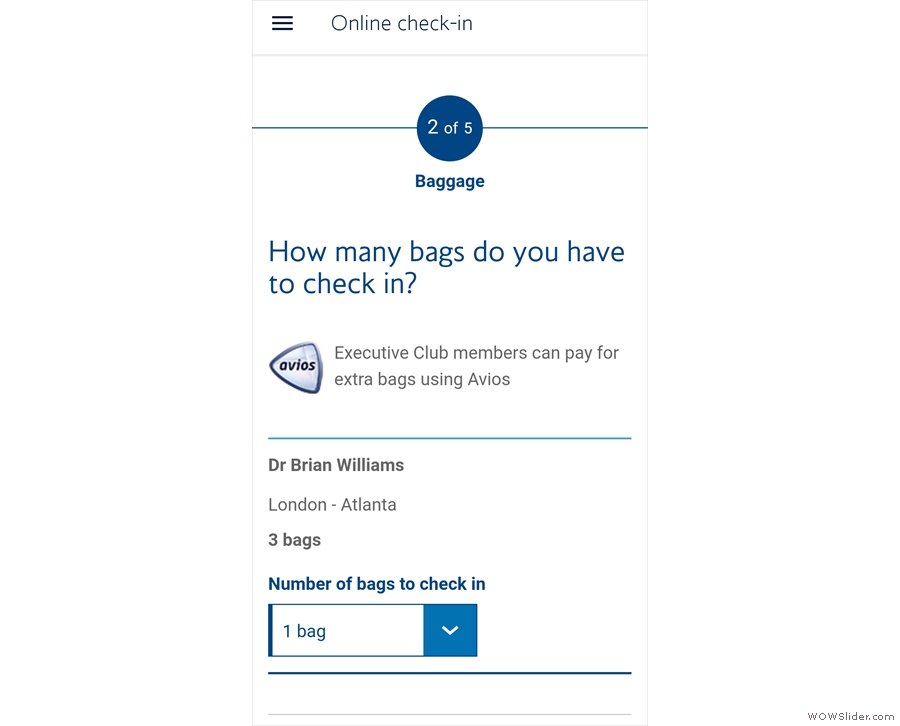
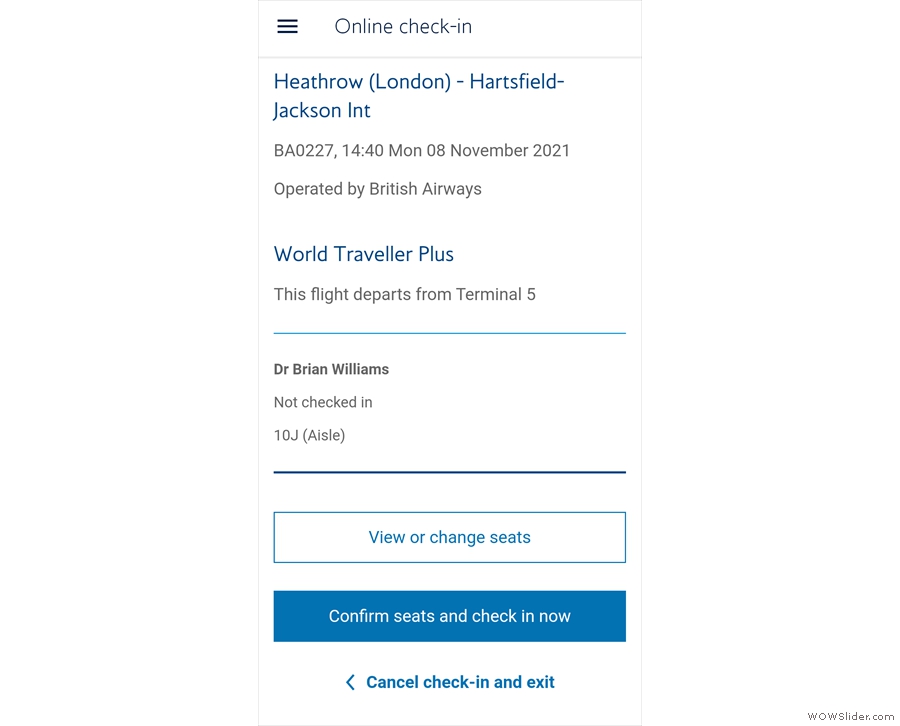
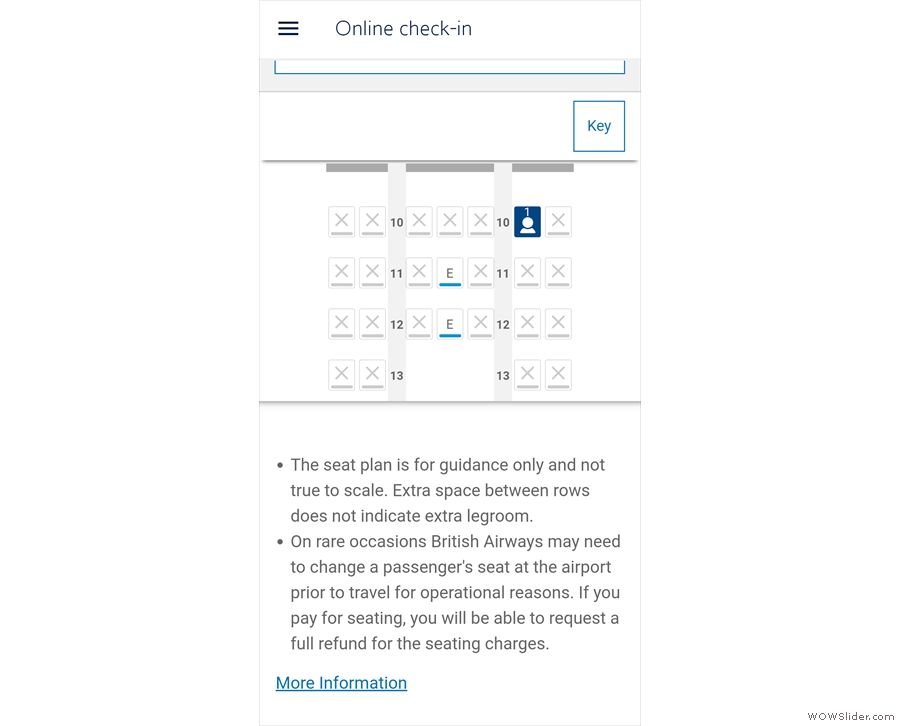
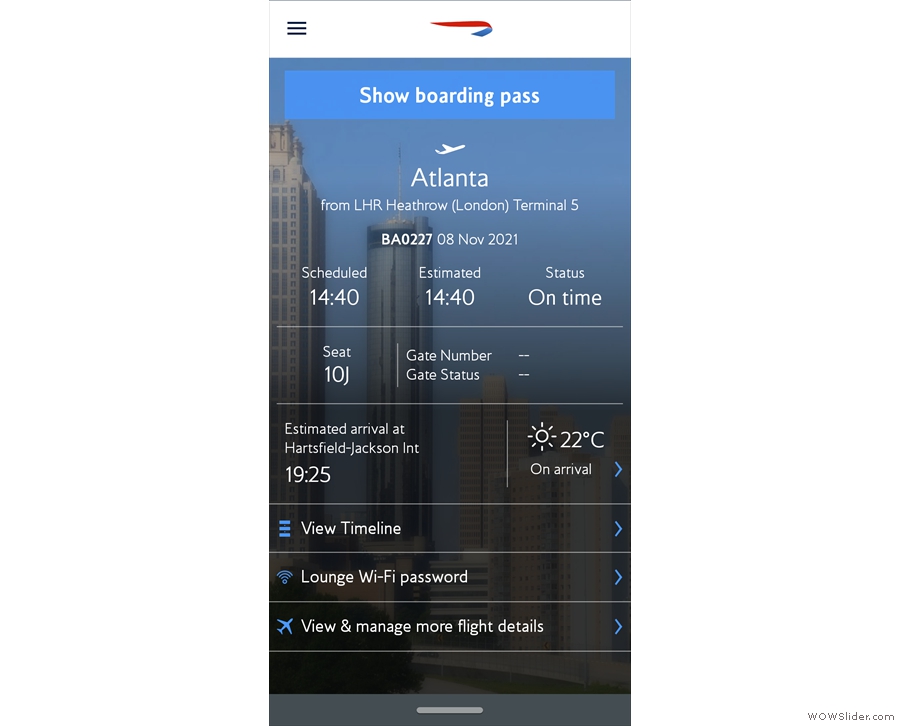
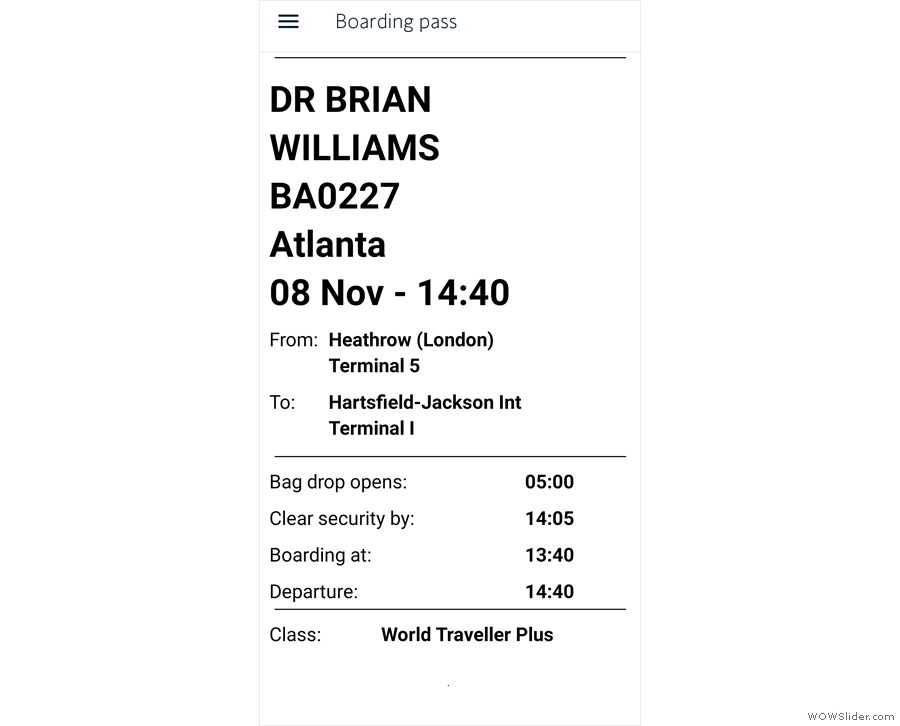
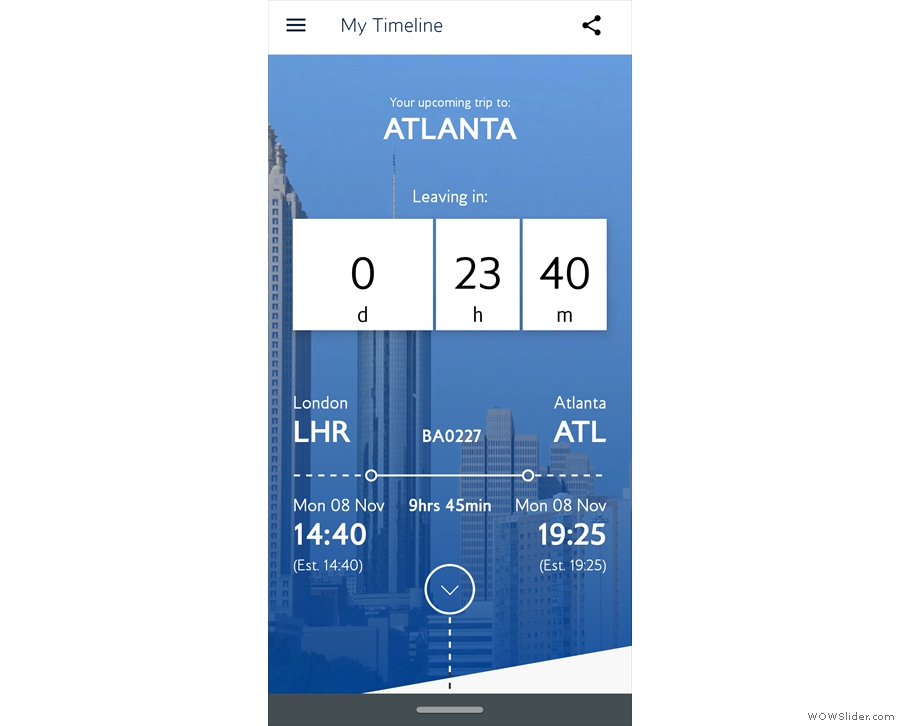
 1
1 2
2 3
3 4
4 5
5 6
6 7
7 8
8 9
9 10
10 11
11
Pingback: Brian’s Travel Spot: Flying to Atlanta in Premium Economy | Brian's Coffee Spot
Pingback: The Roastery at Cobham | Brian's Coffee Spot
Pingback: Speckled Ax, Thames (COVID-19) | Brian's Coffee Spot
Pingback: Brian’s Travel Spot: Flying from Iceland | Brian's Coffee Spot
Pingback: Brian’s Travel Spot: Returning from Boston in Premium Economy | Brian's Coffee Spot
Pingback: Brian’s Travel Spot: Day 2 PCR Test | Brian's Coffee Spot
Pingback: Little Yellow Pig, Nantwich | Brian's Coffee Spot
Pingback: Brian’s Travel Spot: Flying to America (Again) During the COVID-19 Pandemic | Brian's Coffee Spot
Pingback: Brian’s Travel Spot: Back to Boston in Premium Economy | Brian's Coffee Spot
Pingback: Brian’s Travel Spot: Flying to Boston in Economy | Brian's Coffee Spot
This is exactly what we need! I truly enjoyed reading the preceding post because it gave a thorough explanation of everything and was both entertaining and useful. I appreciate it, and I wish you well with the new pieces.